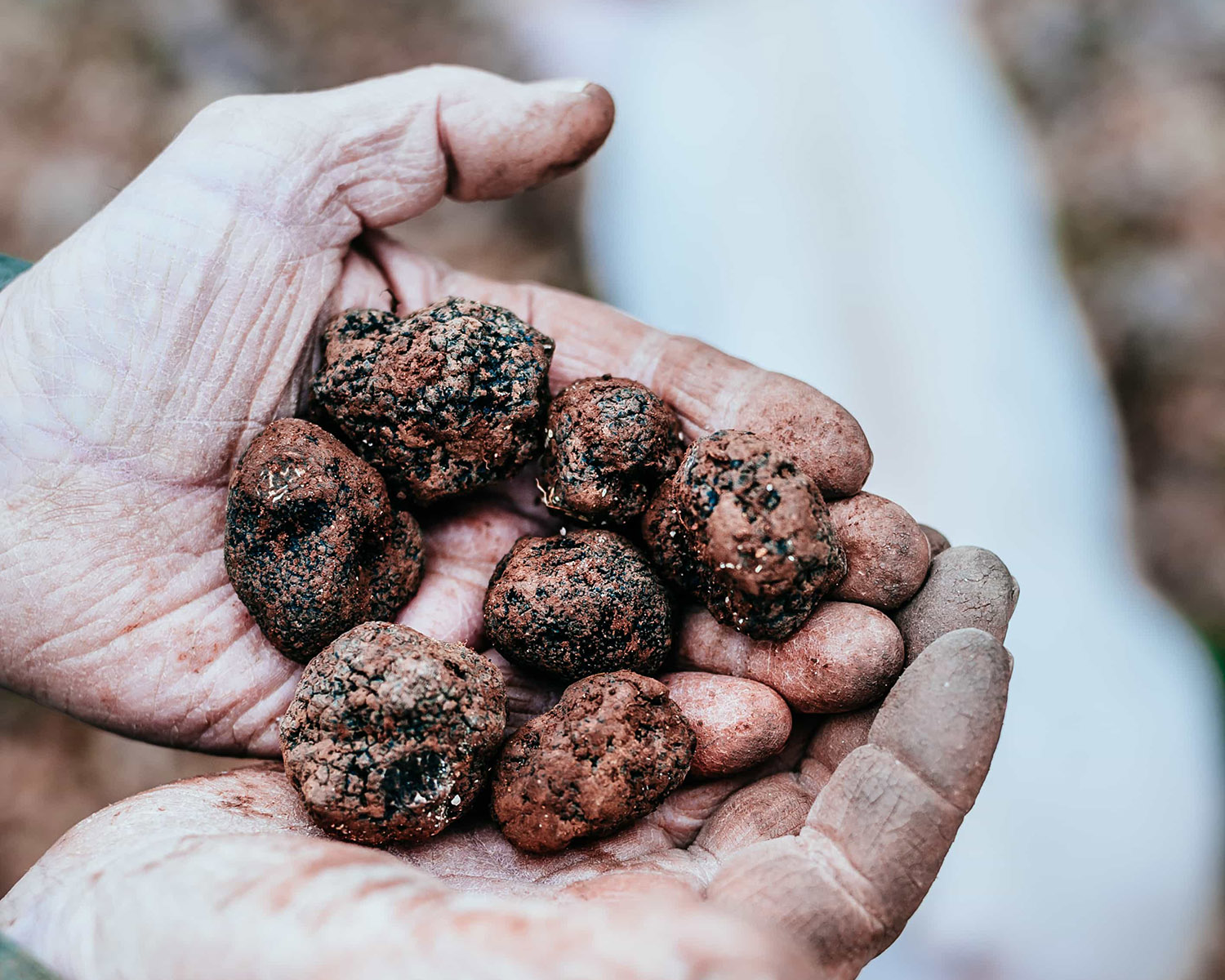France News
Hunting for ‘Black Gold’ in Southwest France

In a picturesque corner of Southwest France, an intoxicating trail leads curious gastronomes to buried treasure. We’re going on a truffle hunt.
I am raw html block.
Click edit button to change this html

In a picturesque corner of Southwest France, an intoxicating trail leads curious gastronomes to buried treasure. We’re going on a truffle hunt.
“She never calls me cute,” mutters Paul Pinsard, with a shrug of Gallic indignation. The farmer had just finished relaying the tale of his wife’s fondness for another: “Once I caught her whispering in his ear ‘Tu es mignon!’ she was saying. ‘Mignon!’”
He rubs at the red clay caking his big hands. “She never kisses and cuddles me like that!” There’s a snort from inside the stock trailer hooked up to his car.
“That’s Kiki,” Monsieur Pinsard says, “… the object of my wife’s affection.” He picks up his truffadou – part animal prod, part digging tool – that rests with a leash on the trailer’s roof. Kiki responds with a happy grunt, or ‘groin groin’ as the French call an ‘oink oink’.
It’s 40 winters since Pinsard found truffling. And it’s a pursuit that he will never tire of. Like another 2000 hunters, or rabassiers, in this part of southwest France, he heads out on free days in the wintertime to gather truffles. Often, he returns home with enough for a glamorous meal, sometimes a little more that he can sell for pin-money.
Pinsard is a countryman – a paysan in this corner of deepest France where the term ‘peasant’ isn’t belittling. A workaday farmer and elected local councillor, he is a rare breed: a rabassier that hunts with a truffle-hog.
Using a pig to sniff out truffles is a tradition that harks back to Roman times and one that seems impractical in this new age, but there’s an end-of-season bonus. And it is revealed when he lowers the trailer’s tailboard and introduces ‘Kiki the 40th’.
Truffle-hogs are always called Kiki, and they’re treated like the family pet. Until April or May, that is, when the season is over and the little piggies end up crackling in farmhouse ovens.
Not that they are always ‘little’, or have such short-lived careers – sometimes old sows (that are as fruitful in the sty as in the truffle orchard) reach the size of Pinsard’s trailer, and can weigh in at a hefty 220 kilograms. So, it’s no wonder that dogs are the ‘nose’ of choice nowadays – after all, they can hop in the back seat of a Renault 2CV without crushing it.
The farmer’s wife was obliged to kiss and cuddle Kiki – and despite his tongue-in-cheek remonstrations, her husband would have encouraged it. A little bit of TLC goes a long way in the ‘breaking’ of a pig, especially when the collar and leash are first put to use.
Kiki scents some ‘black gold’ at 10 yards and scurries across to push its snout deep into the oak-leaf-carpeted soil. Pinsard drops dried sweetcorn kernels to distract the pig while he pulls out the ripe, golf-ball-sized truffle. “The baby truffle grows on the root of the tree in May,” the farmer explains. “After five weeks of feeding, it cuts the cord and lives its own life.” From October the truffle matures, its colour changes from red to black, and its flavour and scent deepen. December’s light frosts intensify them even more.
Lot’s dry, occasionally chill winters are surprising for a department so southerly. Summertime’s hedgerows, meadow orchids and lush grasslands give way to flowering dogwood and bronze-leafed oak in December. And the river, after which the departement is named, gets a little choppy as it races along its tortuous course; a course punctuated by historic villages (some of France’s most beautiful) and ancient capital Cahors, which sits in a vast, moat-like bow. Beyond, there’s a realm of dense woods and rich farmland, vineyards and inland cliffs, and the limestone plateau known as the Causses, a protected ‘natural park’.
The Causses cover two-thirds of Lot and they are a deceptively harsh landscape. Groundwater flushes away quickly, down through the honeycombed limestone bedrock, so that the plateau’s thin coat of topsoil becomes a caked crust in wintertime.
Against this parchment-coloured backdrop, the truffières are easily spotted: orchards of young oaks – except these are upsidedown orchards because the ‘fruit’ grows underground.
As we drive along country lanes lined with dry-stone walls, Fabienne Boussier – my guide when she’s not an acupuncturist in Cahors – chuckles at a memory. “When I was a girl in the 1960s, everywhere seemed to stink of truffles in January. The Tuesday night train to Paris was piled high with wicker hampers stuffed with them. The smell was nauseating!”
That aroma! Like the knotty roots of an oak tree, the truffle’s aroma is a tangle of musky, nutty, earthy, with hints of cocoa, cognac and raspberry. It’s the kind of smell that wraps itself around you. It may be delicate, ephemeral, may last for just a few days, but when it is freshly unearthed it is so extraordinarily pervasive.
The truffle is the ‘spore-maker’ of an underground fungus – and for gastronomes, the black variety must be tuber melanosporum, what Italians call ‘precious black.’ The scent is simply a device to enable the fungus to propagate – like the ‘Eat Me’ cake in Alice’s Wonderland, it entices animals to gobble the truffle up so that the spores can be dispersed further afield.
Latest Articles
Don't miss the latest from Luxury Travel
